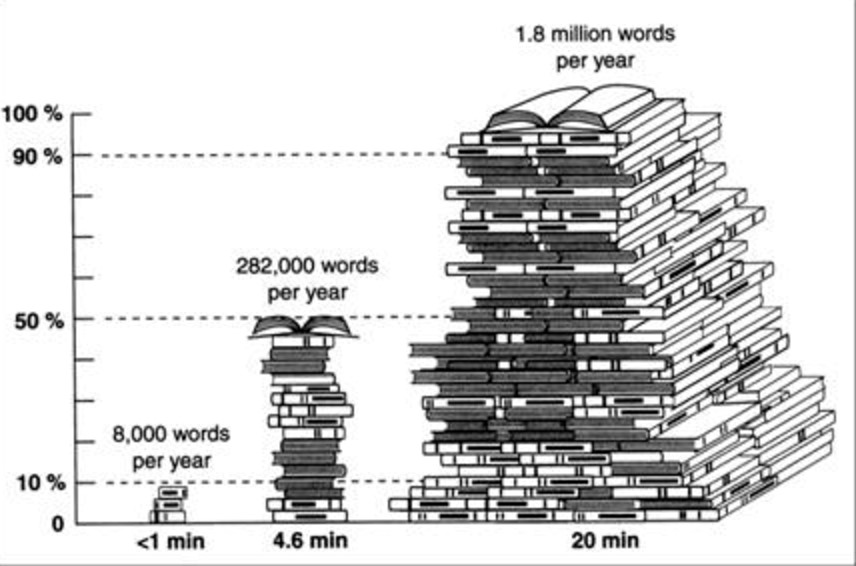With just a little over a month left of school, it’s time remember the impact that daily reading can make for students. Shaywitz’s (2003) graph below says so much

For those who find reading a challenge, summer is the time when just a little bit of intentional, focused oral practice every day can help a student get them back on track and regain their confidence.
For those that find reading and writing especially difficult, it’s a great time for multi-sensory scientifically based instruction, sometimes referred to as Orton-Gillingham or Structured Language approach, with a tutor trained in these methods to solidify skills. It’s time to work on skills that are lagging behind their peers, without the fatigue created by spending the day in the classroom. Students have a marvelous opportunity to make strong gains.
Whether you’ve planned some “academics” for your children or not, below are some ideas for summer activities. In addition, you could consider rewarding your child with an end of the week treat if they read at least a certain amount of time minutes for at least five days in the previous week (an old fashioned chore chart works well for this). 20 minutes a day 5 days a week is less than 2% of summer vacation. How much time do they spend practicing sports, playing computer games, or other things. Make reading a priority this summer.
Below are some ideas to encourage and enjoy reading. Need some ideas for “treats/rewards”? Try a DQ, a new book, a special dessert, and — a favorite at our house – having a picnic dinner.
- Find a movie based on a book. Watch the movie, then read/listen to the book. Talk about the differences and similarities.
- Go to the library and borrow some books and games.
- Pre-read some of the books that will be part of next year’s reading. (Get that list from the teacher before school ends.)
- Do a read-out-loud book.
- Make dinner together—read the recipe, measure the ingredients, learn about the chemistry of cooking.
- Play board games and card games.
- Encourage your child to read to a pet or younger sibling/neighbor.
- On a rainy day, have your children curl up with comic books or magazines.
- Have your child plan a dream day somewhere. Be creative: they could write about it, make a collage, research with a travel book, or just talk about their ideal day. Make sure you share your ideas, too.
- Have a TV/technology free day.
- Once a week, “drop everything and read” for 15 minutes … everyone in the house has to participate.
- CREATE A READING HABIT!!!
Reference
Shaywitz, S. (2003). Overcoming Dyslexia: A new and complete science-based program for reading problems at any level. New York, NY: Vintage Books.
